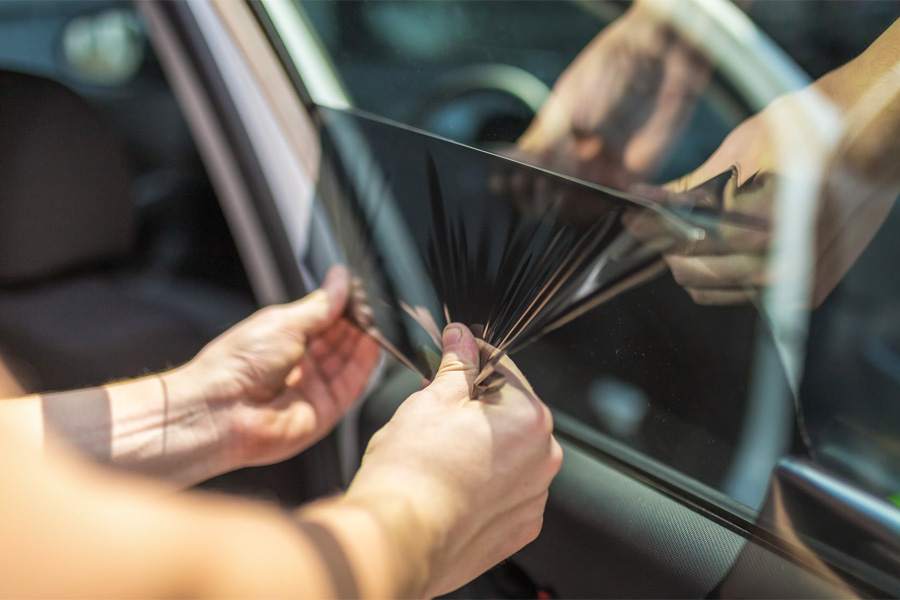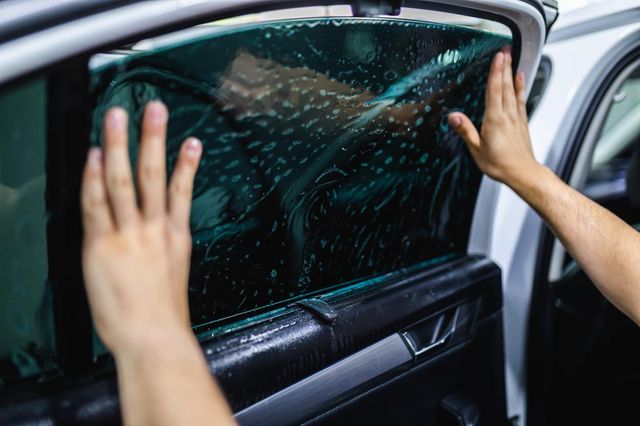How Car Window Tinting Can Boost the Resale Worth of Your Car
Wiki Article
Window Tinting Rules and Standards: What You Need to Know Prior To Tinting Your Car
Prior to proceeding with window tinting for your vehicle, it is crucial to acquaint on your own with the varied laws and guidelines that regulate this practice across various states. These regulations determine the allowable degrees of color darkness, often gauged by visible light transmission (VLT) percents, and include particular specifications for front windscreens intended at guaranteeing road safety.Introduction of Window Tinting Laws
Home window tinting regulations are frequently subject to variation across different jurisdictions, showing neighborhood policies and security considerations. These legislations dictate the acceptable levels of color darkness and reflectiveness on lorry home windows, guaranteeing that chauffeurs keep adequate exposure while additionally safeguarding against hazardous UV rays and warm.A lot of guidelines classify home window tinting based on the Visible Light Transmission (VLT) percent, which indicates the amount of light that can go through the window. Normally, lower VLT percentages symbolize darker tints. Regulations often differentiate between the front, side, and rear home windows, with stricter restrictions applied to the front windshield to boost safety and security for both the vehicle driver and various other roadway users.
In addition, some territories enforce constraints on the reflectivity of the color, avoiding extreme glow that could impair visibility. Exemptions to these laws might exist for people with details clinical conditions requiring added sun defense. Compliance with window tinting regulations is vital, as violations can cause penalties, necessary elimination of the color, and possible boosts in insurance policy costs. It is necessary for lorry owners to familiarize themselves with neighborhood regulations before continuing with window tinting installations.
State-by-State Tint Laws
Comprehending the details home window tinting guidelines in each state is vital for car owners looking for to abide by the law. Each state in the U.S. has established its own collection of guidelines regulating home window tinting, which can differ significantly. These regulations commonly dictate the allowed degrees of tint darkness, the kinds of windows that can be tinted, and any kind of medical exemptions that may use.As an example, states like The golden state have strict limitations on tint darkness for front home windows, while others, such as New Mexico, may enable darker tints. In addition, certain states mandate certain visibility percents for different windows, including the windscreen, front side home windows, and rear windows. It is critical for auto proprietors to acquaint themselves with their state's laws to prevent prospective penalties or charges.
Furthermore, some states might require a certification sticker to be put on colored windows, indicating conformity with state legislations. Failure to follow these laws not only runs the risk of lawful consequences yet can additionally influence security and presence while driving. For that reason, automobile proprietors ought to conduct complete research or consult local authorities to guarantee complete understanding and conformity with state-by-state color regulations.
Allowed Color Kinds and levels
Numerous automobile proprietors may be stunned to learn that permitted color degrees and types differ widely throughout various states. Each state has actually established its very own laws concerning the permitted darkness and reflectivity of home window color, commonly measured by Visible Light Transmission (VLT) portions. VLT refers to the amount of light that can pass via the colored windows; therefore, a lower portion shows a darker tint.
In addition, the types of color materials enabled can differ, with some states prohibiting metal or mirror-like coatings. It is vital for car owners to acquaint themselves with their state's details regulations to make sure conformity. Non-compliance can cause penalties, obligatory removal of the color, or other legal repercussions, making it important to recognize these laws prior to waging installation.
Medical Exemptions for Tinting
While not all states give allocations for clinical exemptions relating to window tinting, those that do acknowledge the need for particular individuals to boost exposure and convenience as a result of medical conditions. Various medical problems, such as lupus, skin cancer, and particular eye problems, can render people particularly delicate to sunshine. These people might require darker colors to protect themselves from damaging UV rays and glare.
It is very important to keep in mind that despite having a medical exemption, there may still be restrictions on the level of tint allowed. Compliance with state legislations makes certain that people are both secured and within legal limitations. Those thinking about medical exemptions must contact their regional Division of Electric motor Vehicles or equal authority to understand the needs and treatments necessary to obtain an exception efficiently.
Penalties for Non-Compliance
Falling short to follow window tinting regulations can cause substantial charges, which differ by state. Legislation enforcement companies are empowered to provide citations for cars that do not follow the defined tinting guidelines. These fines generally include fines, which can vary from modest total up to several hundred bucks, depending on the seriousness of the violation and the state concerned.In some jurisdictions, repeated offenses may lead to intensifying fines or additional penalties, such as required court looks. Non-compliance might demand the removal of unlawful tinting, usually at the proprietor's cost. In severe instances, regular culprits may deal with suspension of their car registration up until compliance is achieved.
In addition, insurance coverage implications may emerge from receiving several citations for home window color violations. Insurance companies may view such violations as an indicator of riskier actions, potentially bring about raised costs or trouble in coverage.
To prevent these charges, it is important for lorry proprietors to familiarize themselves with their neighborhood window tinting laws and guarantee that their lorry complies (Window Tinting). This positive approach not just avoids lawful ramifications yet likewise advertises road safety
Verdict

Most laws classify home window tinting based on the Visible Light Transmission (VLT) portion, which indicates the amount of light that can pass with the window. Compliance with window tinting laws is critical, as infractions can result in fines, mandatory elimination of the color, and prospective rises in insurance coverage premiums.Understanding the particular window tinting regulations in each state is crucial for lorry proprietors seeking to conform with the regulation. These regulations usually dictate the allowed levels of tint darkness, the kinds of windows that can straight from the source be tinted, and any medical exemptions that might use.
For instance, states like California have rigorous restrictions on tint darkness for front windows, while others, such as New Mexico, may permit darker tints.
Report this wiki page